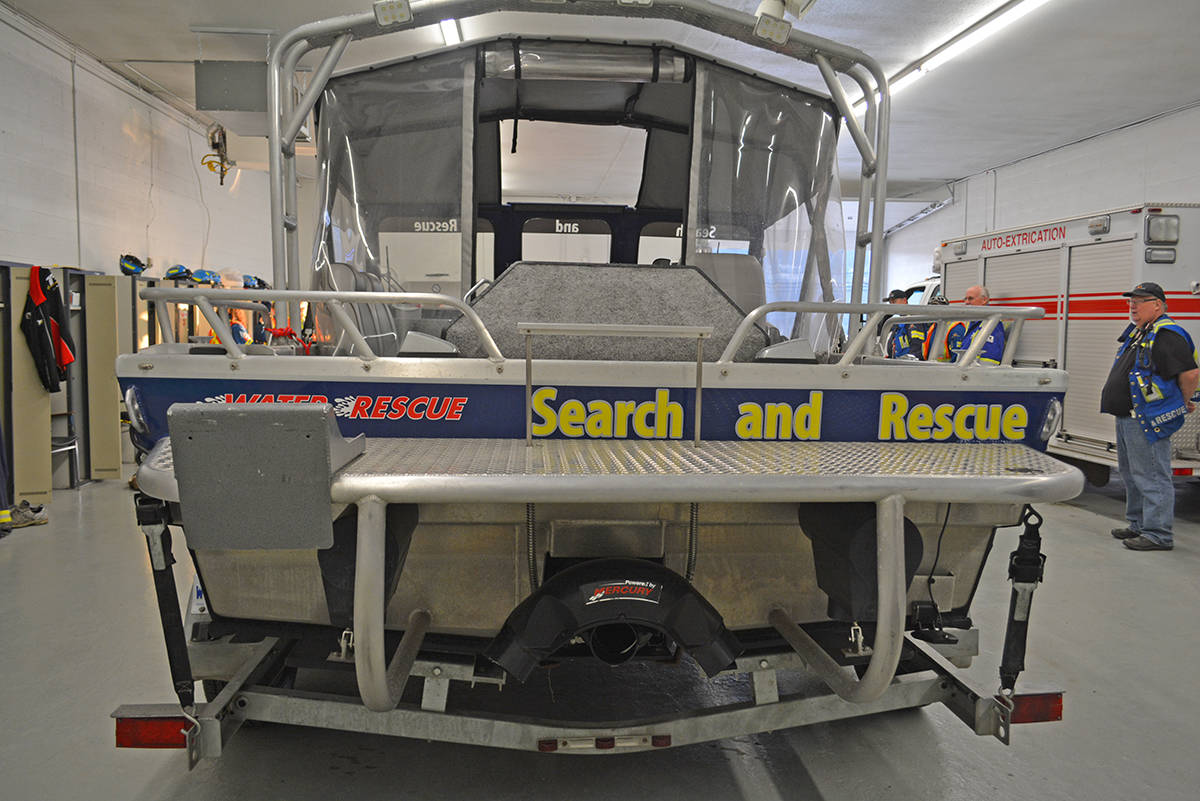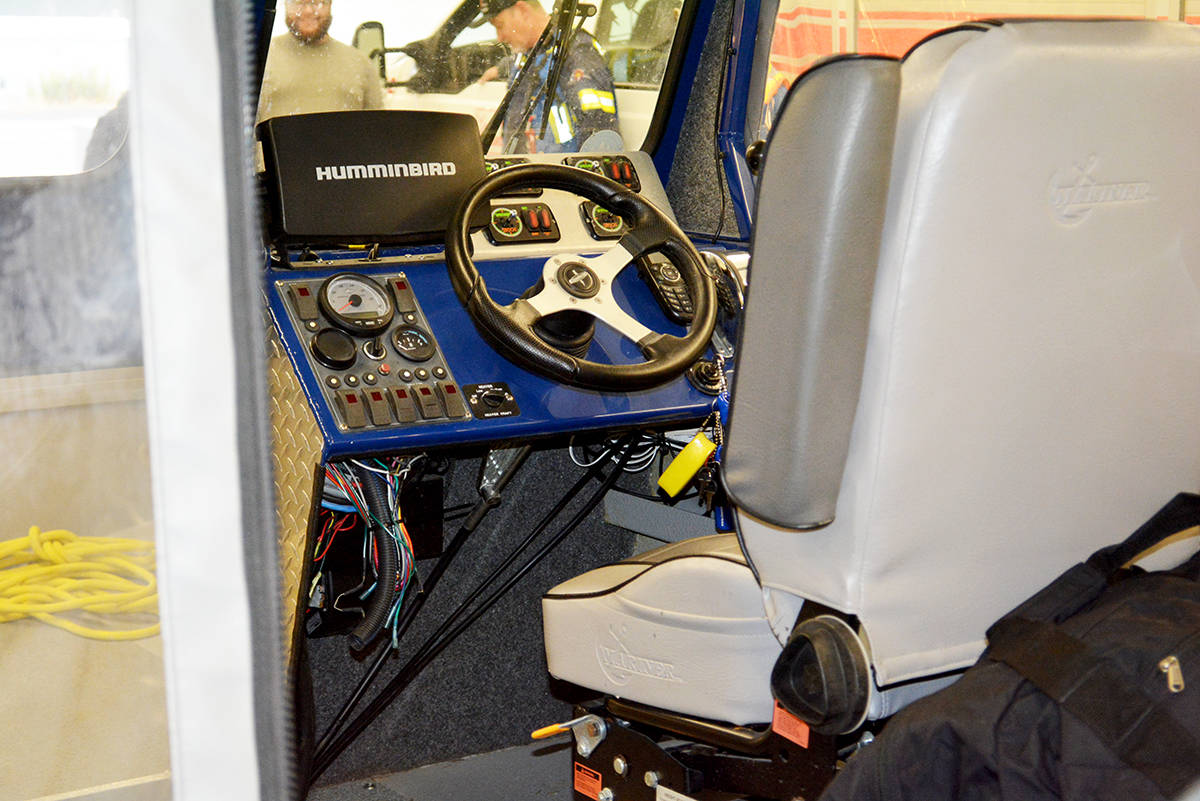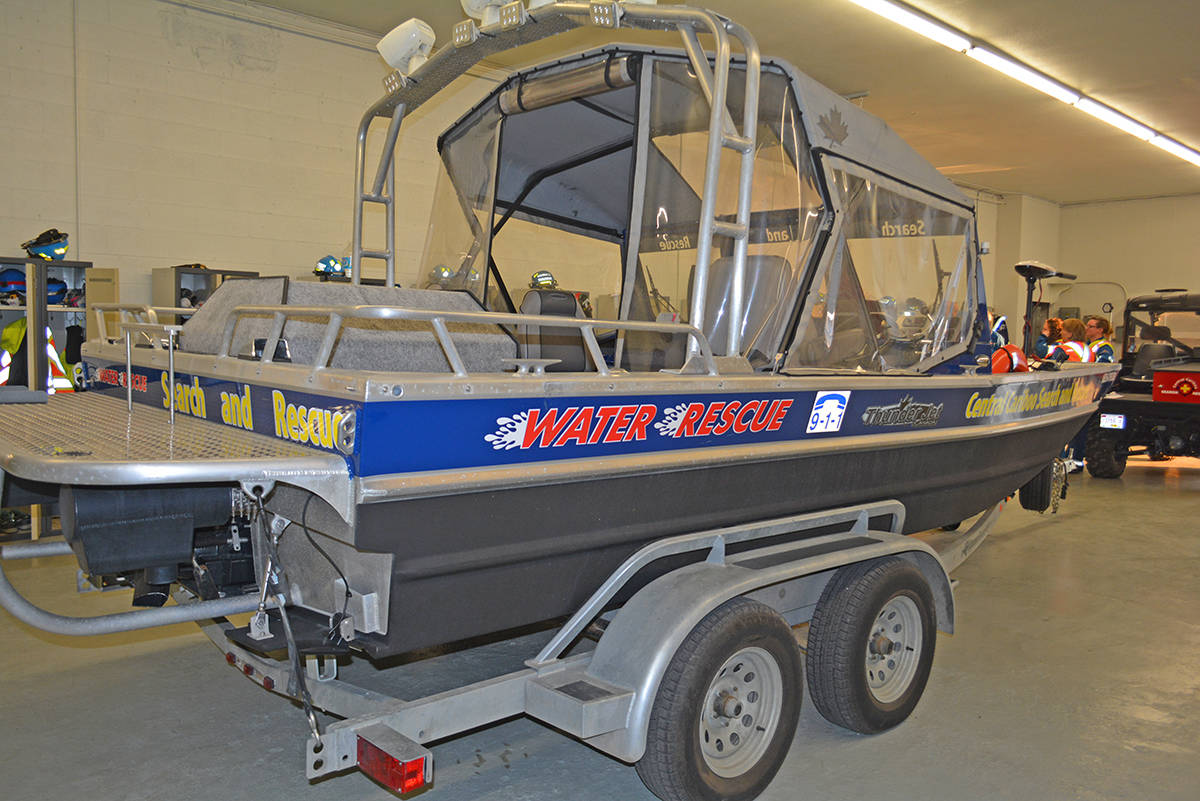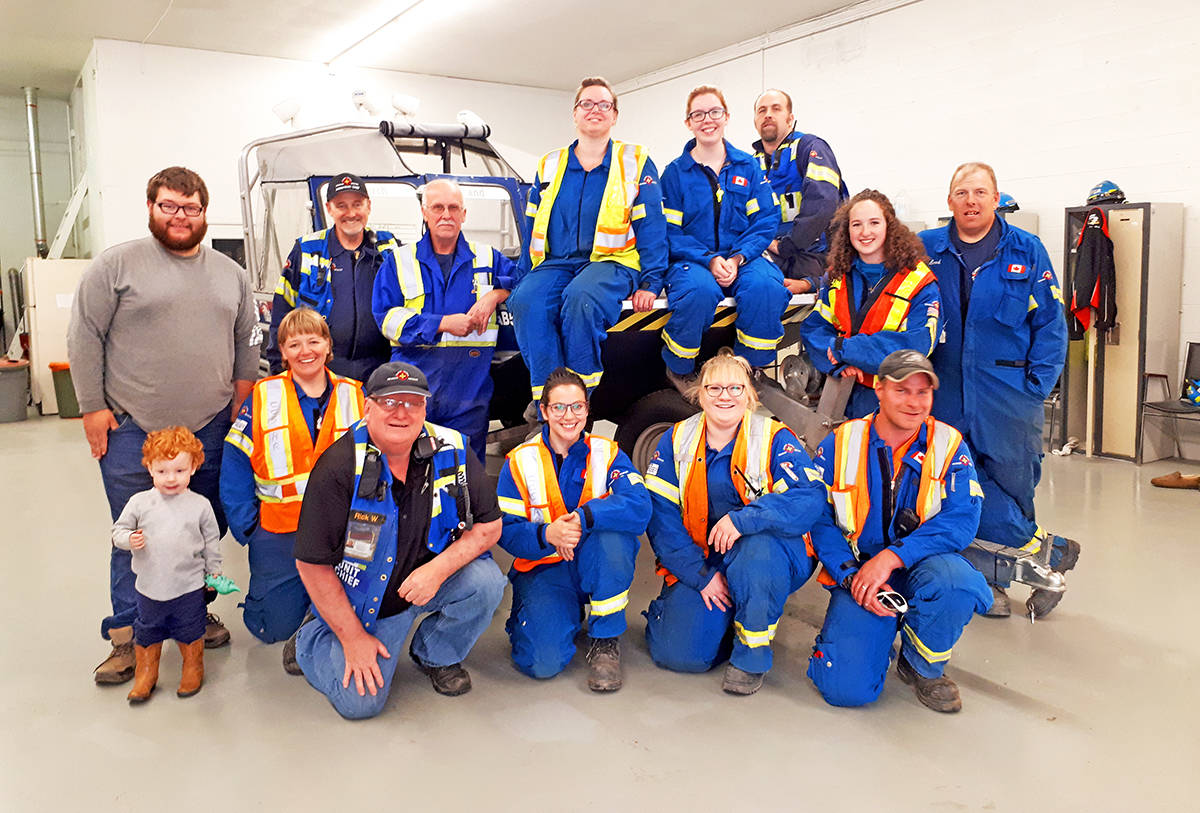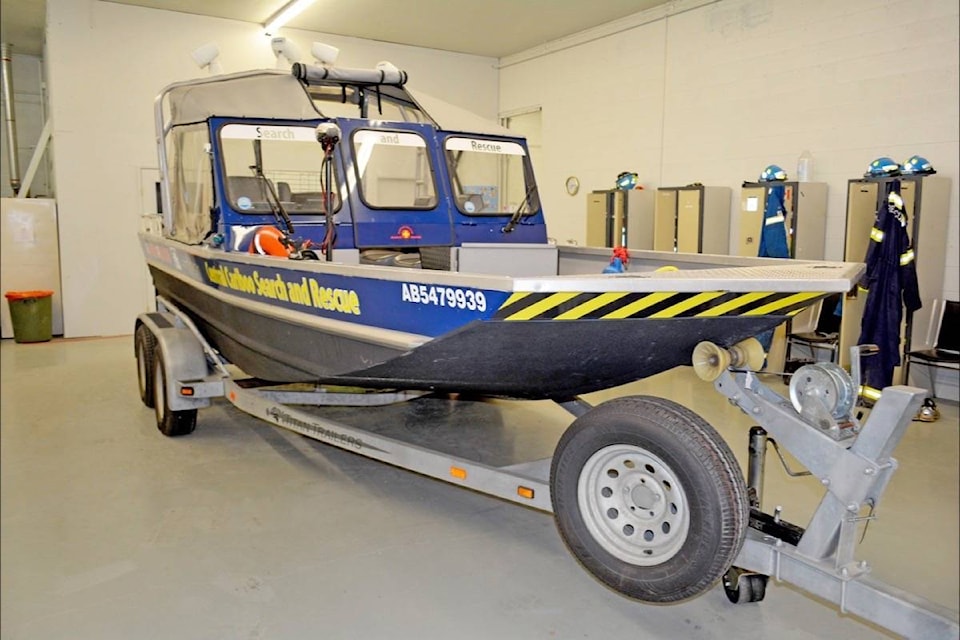Central Cariboo Search and Rescue has a new jet boat thanks to a $40,000 infusion of cash from the provincial government.
Chief Rick White said the new boat means CCSAR has “finally” upgraded.
“It’s like going from a four-cylinder car to a Porsche — quite impressive,” White told media Thursday evening as he, captain Don Trim and assistant chief auto-ex Bob Piderman showed off the new boat.
Recalling an incident CCSAR was called to back in the 1990s, White said plane went down in Williams Lake and the crew borrowed a canoe and paddled out to the scene.
“It turned out to be the plane owner’s canoe,” he recalled. “He was about six foot seven inches, 320 pounds, and he said, ‘heh Rick, how are you doing? What were you going to do with that if I was injured?’”
Luckily, they were towed to shore and from that incident CCSAR acquired a 14-foot Zodiac with 25 horse power.
But if they put some people in it, and gear, it doesn’t go much faster than trolling speed.
“You could walk faster,” White quipped. “We’ve had a couple of serious calls last year so it’s great to have the jet boat.”
Piderman said all SAR units in B.C. received similar grants from the provincial government and as a function of the Cariboo Regional District, CCSAR received the $15,000 needed to purchase the jet boat.
The boat came from Mission Safety Services, which is one of CCSAR’s safety equipment suppliers, White said, noting the owner contacted him one day to ask if he knew anyone that was looking for a boat.
“It’s been in fresh water five times,” he added.
Read more: EMBC recognizes CRD and CCSAR for 2017 wildfire efforts
Trim said the 23-foot-boat is jet-driven and has the capability to transport an ATV if needed.
“We have a hummingbird fish finder, it’s got a fair amount of electronics, we have four search lights that can be independently manipulated right here and shine 360 degrees,” Trim explained. “The lights are all LED and there are four lights on the back that are also LED. You can light this thing up like a Christmas tree.”
The boat can hold four-crew members easily which is the ideal number, Trim said.
“You are going to need the driver and another person with the boat — everything we do is always with two and you are probably going to want a couple more to pack a stretcher.”
Sometimes B.C. Health Services won’t go to remote locations, so CCSAR members are the ones that go in and bring the patients to them, depending on the situation, Trim added.
White said they’ve taken the new boat out for practices and had six people in there “no problem.”
Because it’s a jet-drive, it is a bit more difficult to operate, Trim said.
“Right now I have been developing a training program. It’s still in the works but I am going to try and finalize it on Sunday, Sept. 2 and then we will start getting members trained. It is not the type of boat you can just get into and go.”
Trim said the jet boat will be limited to still water because operators of it will have to have the necessary knowledge to use it on rivers.
“Once someone gains that knowledge, and is confident, then we can start using it on swift water. It is an actual river boat and made for going up on rocks and stuff like that.”
Read more: CCSAR trains in Williams Lake to work with structures during a disaster
news@wltribune.com
Like us on Facebook and follow us on Twitter
